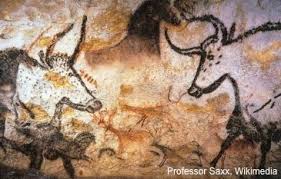Decoding the Prehistory of Aurochs: A Genomic Study

Geneticists from Trinity College Dublin, alongside an international team of researchers, have unveiled the prehistory of aurochs — the iconic animals depicted in early human art — by analyzing 38 genomes extracted from bones that date back across 50 millennia, spanning from Siberia to Britain. Aurochs roamed across Europe, Asia, and Africa for hundreds of thousands of years, and their domestication has led to the development of cattle, which now represent a third of the world's mammalian biomass.
Dr. Conor Rossi from Trinity, the first author of a recently published article in *Nature Communications*, stated, "The aurochs went extinct approximately 400 years ago, which left much of their evolutionary history a mystery. However, through the sequencing of ancient DNA, we have gained detailed insights into the diversity that once thrived in the wild, as well as a better understanding of domestic cattle."
Although fossil records indicate that aurochs existed in Europe for up to 650,000 years, the researchers found that animals from the eastern and western extremes of Eurasia share a more recent common ancestry, suggesting a replacement around 100,000 years ago likely due to migrations from a southern Asian homeland. This replacement was not entirely complete, as traces of earlier ancestry survived in European aurochs.
Dr. Mikkel Sinding, co-author and postdoctoral researcher at the University of Copenhagen, noted, "We typically view the European aurochs as one common type, but our analyses indicate there were three distinct populations: Western European, Italian, and Balkan. This suggests a much greater diversity in wild forms than we previously imagined."
Climate change has also left its mark on aurochs genomes in two significant ways: Firstly, European and north Asian genomes diverged at the onset of the last ice age, around 100,000 years ago, showing little mixing until the climate warmed again. Secondly, the study revealed that population sizes of aurochs dropped during the glacial period, with European herds experiencing the most pronounced declines as they retreated to isolated refugia in southern regions of the continent before repopulating afterward.
The most significant reduction in genetic diversity occurred between the domestication of the southwest Asian aurochs, just over 10,000 years ago, and the emergence of the first cattle. Remarkably, only a few maternal lineages, traced through mitochondrial DNA passed from mothers to offspring, contributed to the cattle gene pool. Dr. Dan Bradley, Professor at Trinity's School of Genetics and Microbiology and lead researcher of the study, commented, "While Caesar exaggerated when he compared it to an elephant, the wild ox must have been a dangerous beast, suggesting that its initial capture and taming involved only a handful of animals."
He further explained, "The narrow genetic base of the first cattle was expanded as they spread with their herders, leading to extensive mating with wild aurochs bulls. This left a legacy of the four separate pre-glacial aurochs ancestries that continues among today's domestic cattle."
This research not only sheds light on the history of aurochs but also underscores the intricate connections between climate change, genetic diversity, and the domestication processes that shaped one of humanity's essential livestock species.
Story Source:
Materials provided by Trinity College Dublin. The original text of this story is licensed under a Creative Commons License. Note: Content may be edited for style and length.
Journal Reference:
- Conor Rossi, Mikkel-Holger S. Sinding, Victoria E. Mullin, Amelie Scheu, Jolijn A. M. Erven, Marta Pereira Verdugo, Kevin G. Daly, Marta Maria Ciucani, Valeria Mattiangeli, Matthew D. Teasdale, Deborah Diquelou, Aurélie Manin, Pernille Bangsgaard, Matthew Collins, Tom C. Lord, Viktor Zeibert, Roberto Zorzin, Michael Vinter, Zena Timmons, Andrew C. Kitchener, Martin Street, Ashleigh F. Haruda, Kristina Tabbada, Greger Larson, Laurent A. F. Frantz, Birgit Gehlen, Francesca Alhaique, Antonio Tagliacozzo, Mariagabriella Fornasiero, Luca Pandolfi, Nadezhda Karastoyanova, Lasse Sørensen, Kirill Kiryushin, Jonas Ekström, Maria Mostadius, Aurora Grandal-d’Anglade, Amalia Vidal-Gorosquieta, Norbert Benecke, Claus Kropp, Sergei P. Grushin, M. Thomas P. Gilbert, Ilja Merts, Viktor Merts, Alan K. Outram, Erika Rosengren, Pavel Kosintsev, Mikhail Sablin, Alexey A. Tishkin, Cheryl A. Makarewicz, Joachim Burger, Daniel G. Bradley. The genomic natural history of the aurochs. Nature, 2024; DOI: 10.1038/s41586-024-08112-6

0 Comments